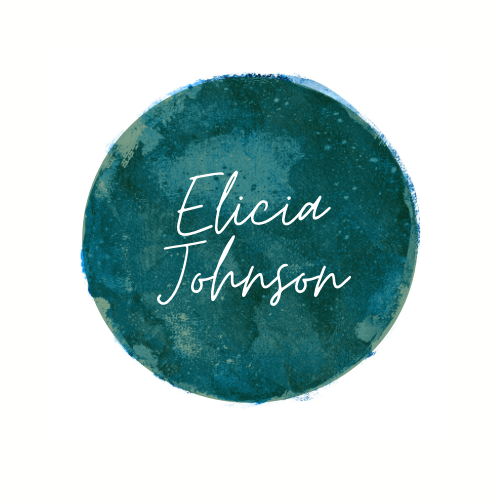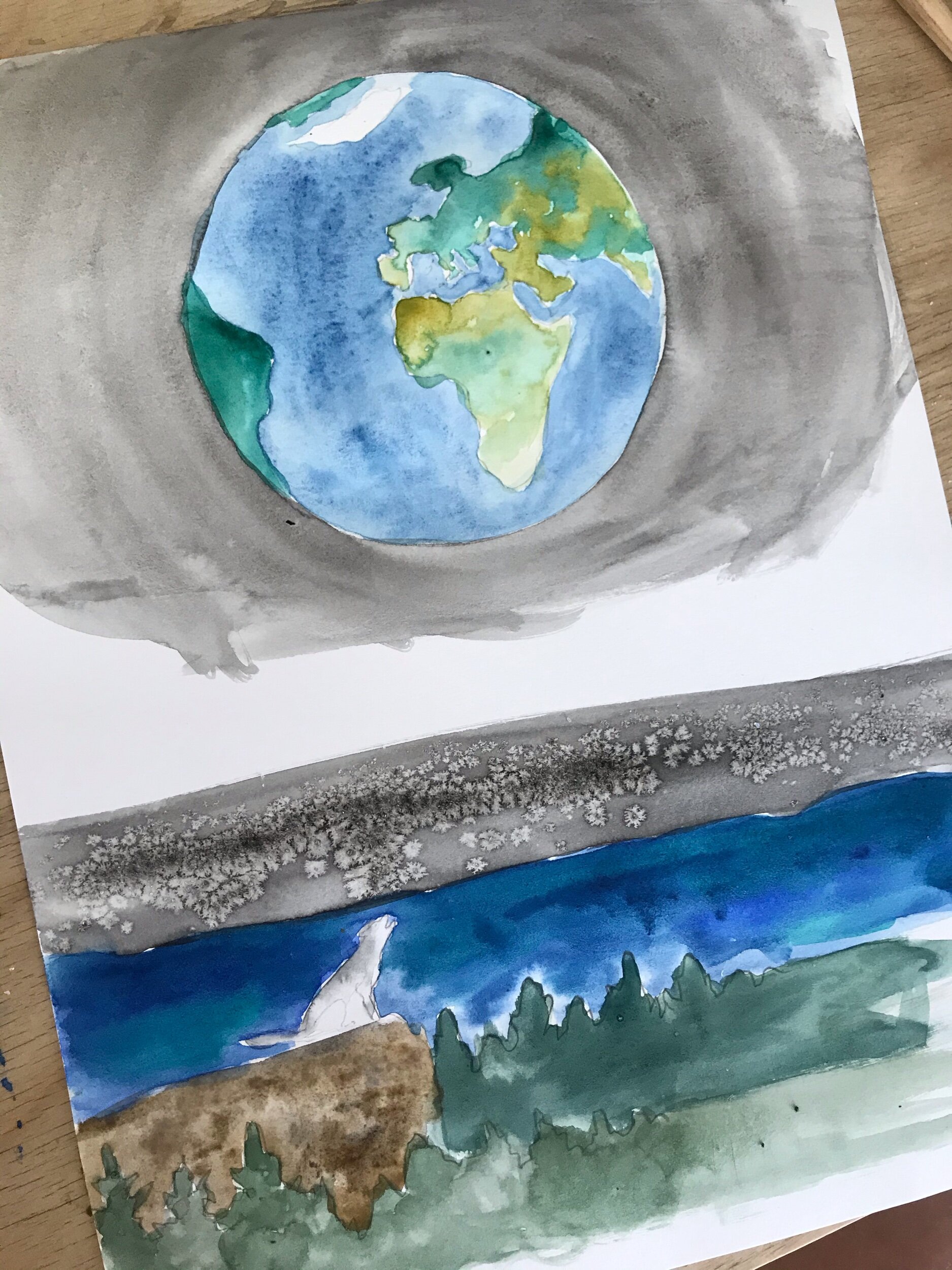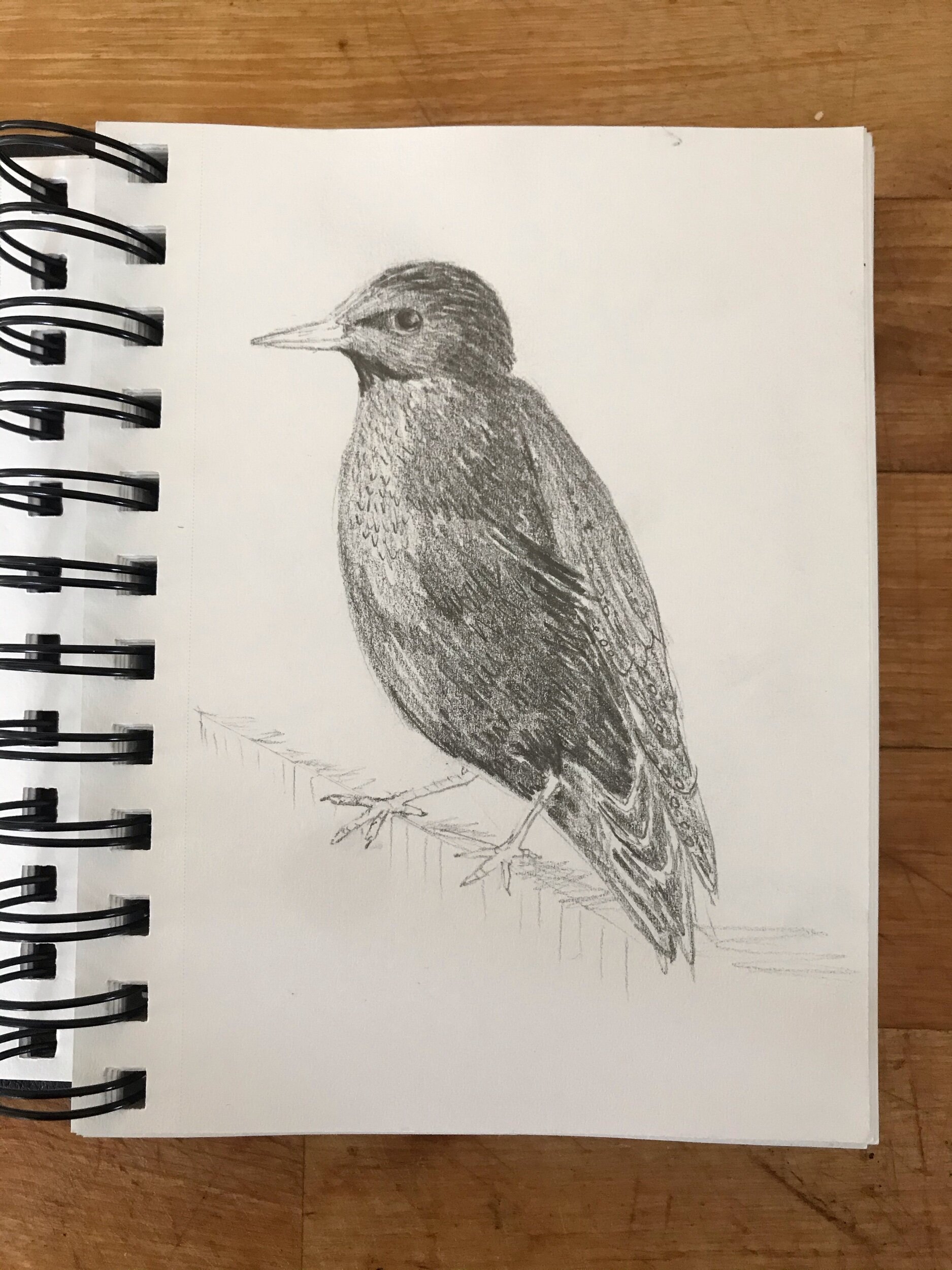Tools of the Trade: Watercolor Supplies
This post contains affiliate links which means if you choose to shop through those links, you’re also supporting my writing at no extra cost to you.
I posted last week about how encouraged I was by you as readers. And a few weeks ago I mentioned how fun it has been to practice illustrating without the pressure of being perfect. In general, we have a creative home so art is a part of our every day. We use nature study in our homeschool but we also like to draw what we see around us, hand-make gifts and clothing, and really just let our creativity have room to blossom. When my children were preschoolers, I remember a dear friend twitching a little when I said I was a “pro-mess mom” because all the fun stuff requires getting messy. As my children grow, I definitely have to curb my enthusiasm in order keep a relatively orderly house.
I thought I would share some of the affordable supplies we like and show you some good ways to explore the simple art of watercolor painting. I say simple because the supplies are easy to use and clean up, not because it’s super easy. I have only started to become more confident using watercolor in the last couple of years. Now I have a couple of projects that I’m illustrating and I’m still learning new techniques all the time.
First the fun stuff, PAINT!
I like this set of watercolors for my children. The colors are more vibrant and mixable than a set of crayola paints. They are a high enough quality that they can begin to experiment with different watercolor techniques but not so expensive that you’ll cry if they cover an entire page in one solid color.
I prefer watercolors in a cake and have found decent pigments in the Master’s Touch at Hobby Lobby and Windsor & Newton. The professional set found here is pretty pricey, but the more affordable Cotman line is good enough quality for most amateurs.
One of the biggest differences in how well your water color paintings will come out is the paper. I have higher quality paper that I use for book illustrating projects and paintings and then I also purchase different notebooks and journals for our nature study and on-the-go creative whims. My favorite paper is this book of twelve 140 lb press, cotton paper from Arches. At first I didn’t think I would like the texture that this paper has but it turns out quite the opposite, I LOVE IT! The watercolors don’t pool upon the low spots and it gives it a more “alive” feeling to me.
For my children I have used these mixed media journals, this watercolor pad and these sketchbooks. We have all LOVED these tiny watercolor journals. They are perfect for painting on a vacation or doing a challenge such as painting every week or painting all the birds you see in a season. They do come in other sized, but the small square ones are adorable and handy!
Brushes:
You really don’t absolutely NEED a ton of brushes. The most important one is a small to medium sized round brush that comes to a good point. Then I would buy a tiny one for adding fine detail. A larger brush for covering large areas is optional. After using those for a while, you’ll know if you need anything else in particular. Its much more worth it to spend money on one or two brushes that aren’t going to fray right away than it is to get a whole big set. I would recommend this Round #6 and this round 0 for detail. Or you could get a small set like this with the perfect sized of starter brushes.
I’ve also ventured into watercolor pencils lately and I’m loving these from Faber-Castelle.
The first thing to remember whenever you’re thinking about starting an art project is that no one is going to grade you at the end of the day. Just enjoy yourself! If you just start drawing or painting and then do it more and more (I love those little journals for this), you WILL see improvement! If you try once and it really stinks, welcome to the club! Just pick up your pencil and brush and do it again and again. Figure out which parts of it you enjoy. Do you like things to be realistic or do you like to let your imagination have its way? Consistency is how you can find your own style and its why sketching and painting was such a valued part of a young person’s education in days gone by.
The best place to begin is always to draw what you see. Often we mess ourselves up when we attempt to capture something because we draw what we think it should look like. For example, often when my children do nature study they add things to their drawings that they couldn’t possible see, such as roots on a flower or individual lines on leaves when they’re drawing a whole tree in a large scene. This often accounts for angles that don’t match or distorted shapes. We might know that the size of a box is square, but unless you’re looking at it dead on it won’t look like it. Really look and draw what you see.
Watercolor has its own techniques separate from oils, acrylics or even gouache. It’s fun to just try a few paintings to see what happens. Then it’s fun to search YouTube for some techniques and work on one new skill at a time.
Start with something you like. Do you collect tea pots? Paint them! Are you an avid hiker? Draw views from your favorite hikes. Are you a foodie? Start with a still life of beautifully presented food. Have a childish obsession over whales? No? Just me? Well, I saw the greatest improvement in my painting when I started drawing what I loved.
Okay, your turn. Are you an artsy person? Even if you don’t think so, would you do a challenge to draw or paint every day for a week? a month? a year? I’d love to see some of your doodles!









